Contents
Wheel-shaped negniyuchnik (Marasmius rotula) is a miniature fruiting body from the Negniyuchnikov family and the genus Negniyuchnik. It was first described and classified by the Italian-Austrian naturalist Giovanni Scopoli in 1772 as wheel mushroom. Its other names:
- merulius collar, since 1796, W. Withering;
- micromphale collar, from 1821, S. Gray;
- tychinka kolosovidnaya, since 1887, N. Patuiyar;
- chametceras wheel-shaped, since 1898, O. Kunze.
What does a wheel-shaped non-rottor look like
Fruiting bodies, even in adulthood, are small. The legs are thin and, in comparison with the caps, are significantly elongated, filiform in shape.
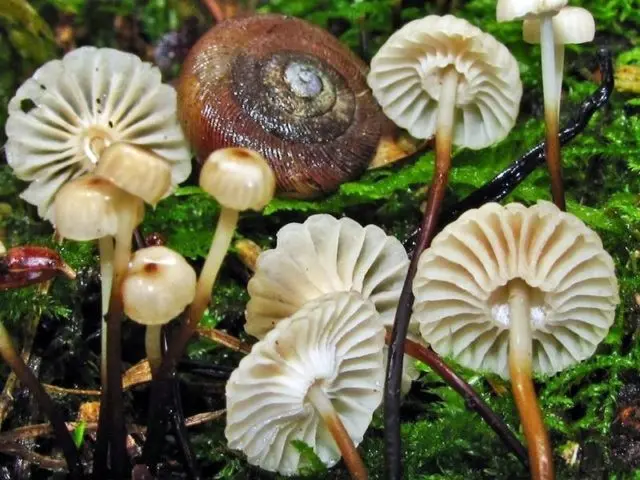
The wheel-shaped rotten mantle rarely exceeds the size of an ordinary snail around the circumference of the cap.
Cap Description
In mushrooms that have just appeared, the caps look like a rounded-ribbed screw head. The middle is straight or with a small funnel-shaped depression, with a dark reddish-brown tubercle. From half the diameter, the surface is lowered down almost at a right angle, in some cases the edges are slightly turned up to the stem. Developing, the wheel-shaped non-rotten spreads its hat, which becomes first domed, then umbrella-shaped, and then prostrate, often with the edges lowered down. A narrow funnel in the place of growth to the stem is preserved and deepened. The diameter varies from 0,3 to 1,4 cm.
The surface is muco-moist, smooth. Longitudinally wavy or even, tuberculate in overgrowths. Snow white or creamy yellowish, with a dark centre. Sometimes with brown spots, when dry it becomes sandy-brown or light ocher. Margin sinuously serrated, segmental, often wavy. The flesh is thin, fragile, with an unpleasant odor.
The hymenophore plates are rare, sometimes sinuous, the hat from the inside is very reminiscent of flower petals or an umbrella attached to a collar-collarium. The color is similar to the color of the hat. Spore powder is white.
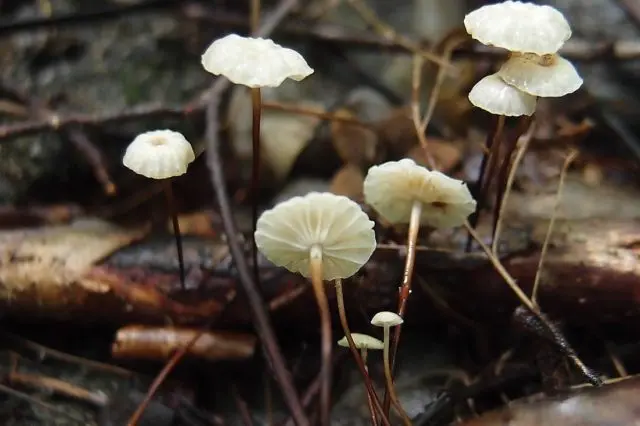
Through the parchment-thin pulp, the radial plates of the hymenophore are clearly visible.
Description of the leg
The wheel-shaped negniyuchnik has a long leg. Thin, no more than 1,8 mm, smooth, hollow inside. Often curved, from 2 to 9 cm long. The color is uneven, in young mushrooms the color is lighter. Dark at the root: from resinous amber, brown, golden to chocolate and jet black, and silvery white or cream at the cap. Drying, the leg becomes wrinkled, longitudinally folded.
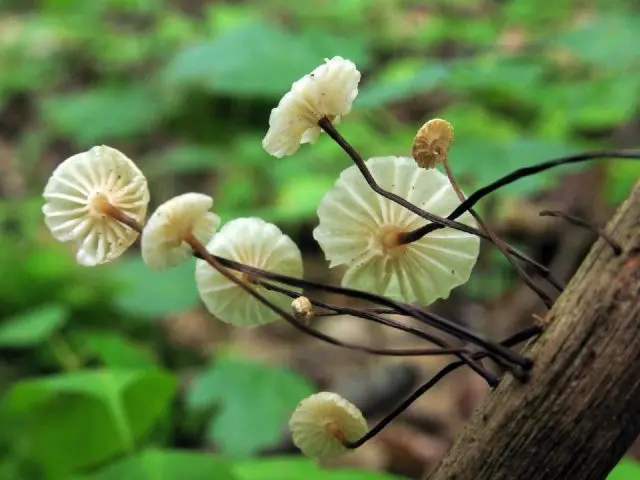
Dried legs take on the appearance of a charred match
Where and how to grow
The wheel-shaped rot grower grows on rotting wood, thick forest litter, in deadwood and on old, rotten stumps. Likes wet places. Prefers deciduous or mixed forests. It is found often and everywhere, it is a cosmopolitan mushroom. Distribution area – Europe, Asia, North America. In Our Country, it is most common in Siberia and the northern Caucasus.
It grows in large colonies, forming amazingly beautiful white-star-shaped blotches against the background of brown forest litter. The fruiting period of the mycelium is from July to October.
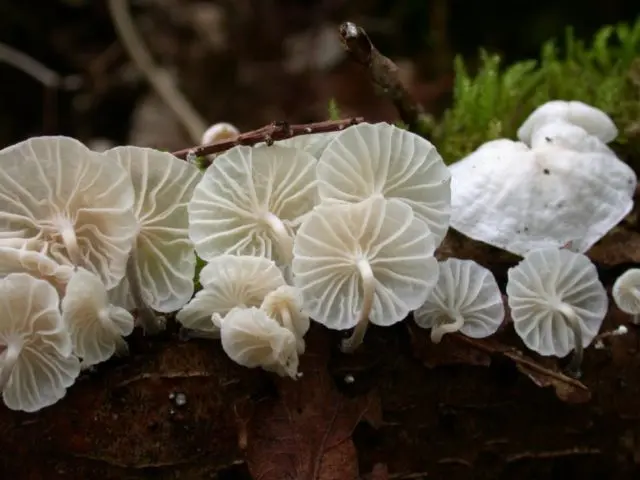
Favorite habitat – fallen, wet tree trunks
Is the mushroom edible or not?
The wheel-shaped rot is classified as an inedible mushroom due to its unpleasant odor and low nutritional value. There are no data on its toxicity.
Twins and their differences
The wheel-shaped rotten can be confused with other representatives of its species.
Cheese mushroom (Marasmius bulliardii). Not edible due to its miniature size. The color and shape of the hat are completely the same, snow-white at the beginning, with age it changes its color to ocher, cream or pinkish. The only noticeable difference is that the plates of the hymenophore are not attached to the collar on the leg, as in the wheel-shaped non-rotten.
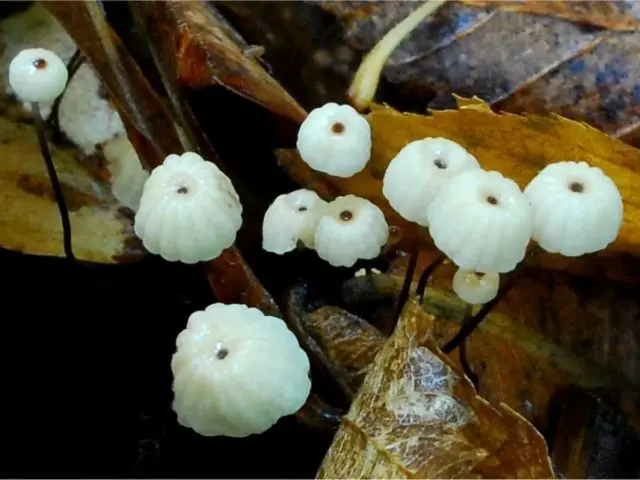
Amazingly beautiful mushrooms that are hard to notice
Conclusion
The wheel-shaped negniyuchnik is an exquisitely fragile miniature mushroom from the genus Negniyuchnikov. It lives on deciduous and coniferous waste, pieces of half-rotted bark, rotting stumps and tree trunks. He likes places saturated with moisture, gullies, lowlands. It occurs in deciduous and mixed forests throughout the Northern Hemisphere. In Our Country, it is especially often seen in the Caucasus and in the taiga forests. Inedible, the flesh has a sharp unpleasant odor. There is no data on its toxicity. It is used in laboratories as a determinant of certain substances. Has inedible doppelgangers belonging to its species.









